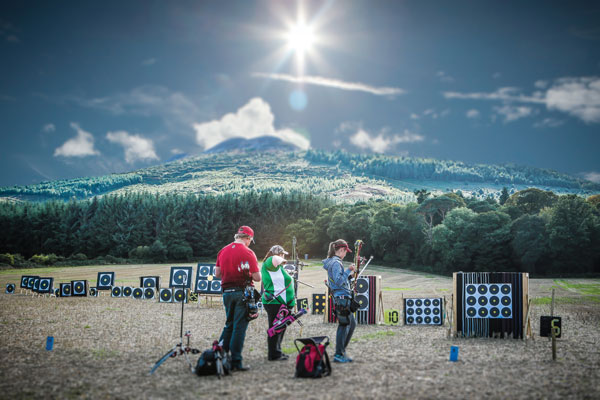
Shooting field teaches you skills that make you a better overall archer, says Chris Wells
Field archery is target archery without rules. Well, without the rules that now make it a singular quest for perfection, over one distance, in one set of conditions.
Variables in field archery include distance, angle, setting, slopes, footing, light perspectives, equipment behaviour, length estimation – and that target archery favourite, wind.
An archer’s ability to comprehend all this information is often referred to as fieldcraft. It’s more science than witchcraft, though, and while shooting target may not require such in-depth knowledge of all the elements, an archer understanding them only makes him or her better.
Just look at the podiums from the last Olympic Games. While the Korean archers don’t shoot field, the others do: Brady Ellison was world field champion in 2014 and 2016; Jean-Charles Valladont won the tournament in 2012; and Lisa Unruh in 2014.
These three didn’t climb the podium at the Games because they shoot field. They might even have started shooting field because they’re good target archers and wanted either the challenge or the change. But there’s a correlation. “When you get into mountains and angles, the game changes,” says Ellison. “That’s where knowledge and experience comes in.”
The most important thing field teaches is the art of self-evaluation. Because every set of three arrows on a field course is different, as archers change from target to target, every single arrow is both a scoring value and a sighter – an opportunity to receive feedback from equipment and technique. An arrow goes low – so what caused it? Was it a well-executed shot, or was it weak, was it aimed correctly on the right mark? Did the light affect perspective?
It should be easier when shooting target archery, at the same distance and in the same conditions, to make these evaluations – and subsequent decisions that keep arrows in the middle. But somehow it’s not.
It’s much easier to fall out of rhythm and be unsure as to what’s going wrong. Or to blame things on slightly bumpy ground beneath the feet – or a horizon that’s skewed to the target.
This doesn’t help anyone, no matter what style of archery – and that’s why you should shoot field. It’s a thinking archer’s game.

